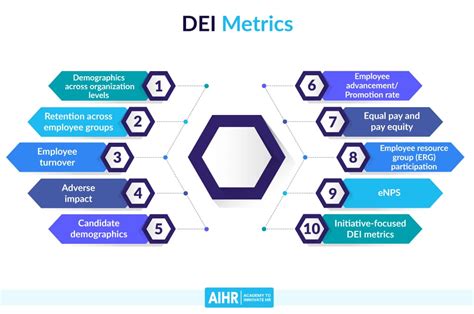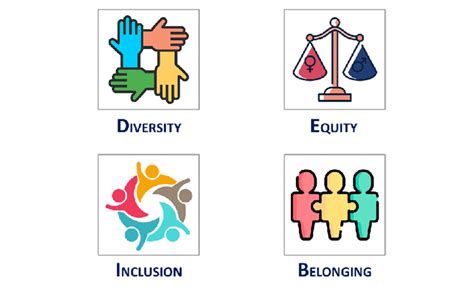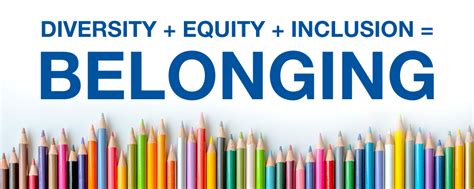What Is Deib

Deib, also known as Diversity, Equity, Inclusion, and Belonging, is a framework designed to foster a culture of acceptance, respect, and empowerment within organizations and communities. This concept has gained significant attention in recent years, particularly in the context of workplace culture, education, and social justice movements. At its core, Deib aims to create environments where individuals from diverse backgrounds feel valued, supported, and able to contribute their unique perspectives and talents.
Key Points
- Deib is a holistic approach that encompasses diversity, equity, inclusion, and belonging to promote a culture of respect and empowerment.
- Diversity refers to the presence of different groups or individuals within a community or organization.
- Equity focuses on ensuring fair treatment, access, and opportunities for all, acknowledging and addressing historical and systemic inequalities.
- Inclusion involves creating an environment where everyone feels welcome, valued, and able to participate fully.
- Belonging refers to the sense of connection and acceptance that individuals feel when they are part of a community or organization.
- Implementing Deib requires a commitment to ongoing learning, self-reflection, and action to address biases, barriers, and inequalities.
Understanding the Components of Deib

To grasp the concept of Deib fully, it’s essential to understand each of its components and how they interrelate. Diversity is often the first step, involving the recruitment and retention of individuals from various backgrounds, including but not limited to race, gender, sexual orientation, disability, and socio-economic status. However, diversity alone is not sufficient; it must be accompanied by equity, which involves addressing and rectifying the historical and systemic inequalities that have prevented certain groups from accessing the same opportunities as others.
The Role of Inclusion and Belonging
Inclusion and belonging are critical for creating an environment where diversity and equity can thrive. Inclusion involves more than just the presence of diverse individuals; it requires active efforts to ensure that all members feel valued and able to contribute. This can involve training programs to address biases, creating safe spaces for discussion, and implementing policies that support work-life balance and flexibility. Belonging takes this a step further, focusing on the emotional and psychological sense of being part of a community. When individuals feel they belong, they are more likely to be engaged, motivated, and committed to the organization or community.
| Deib Component | Description |
|---|---|
| Diversity | The presence of different groups or individuals within a community or organization. |
| Equity | Ensuring fair treatment, access, and opportunities for all, addressing historical and systemic inequalities. |
| Inclusion | Creating an environment where everyone feels welcome, valued, and able to participate fully. |
| Belonging | The sense of connection and acceptance individuals feel when part of a community or organization. |

Implementing Deib in Practice

Putting Deib into practice involves a multifaceted approach that includes policy changes, training programs, community engagement, and leadership commitment. Organizations and communities must be willing to confront and address their own biases and inequalities, which can be a challenging but ultimately rewarding process. This may involve conducting diversity and inclusion audits, implementing blind hiring practices, providing diversity and inclusion training, and creating employee resource groups to support different communities within the organization.
Challenges and Opportunities
Despite the benefits, implementing Deib can also present challenges, including resistance to change, difficulty in measuring progress, and the risk of tokenism or performative diversity initiatives. However, these challenges also offer opportunities for growth and learning. By engaging in open and honest dialogue, seeking feedback, and being willing to make mistakes and learn from them, organizations and communities can overcome these challenges and create a truly inclusive and equitable environment.
What are the key benefits of implementing Deib in an organization?
+The key benefits include increased innovation, improved employee satisfaction and retention, enhanced reputation, and better access to diverse markets and talent.
How can organizations measure the success of their Deib initiatives?
+Success can be measured through diversity metrics, employee engagement surveys, feedback sessions, and tracking the impact of Deib initiatives on business outcomes such as innovation and revenue growth.
What role does leadership play in Deib initiatives?
+Leadership plays a critical role in setting the tone for Deib initiatives, providing resources, modeling inclusive behaviors, and holding the organization accountable for progress.
In conclusion, Deib is a powerful framework for creating a more just and equitable society, one that values and empowers all individuals regardless of their background. By understanding and implementing the principles of diversity, equity, inclusion, and belonging, organizations and communities can unlock the full potential of their members, drive innovation, and contribute to a more compassionate and connected world.